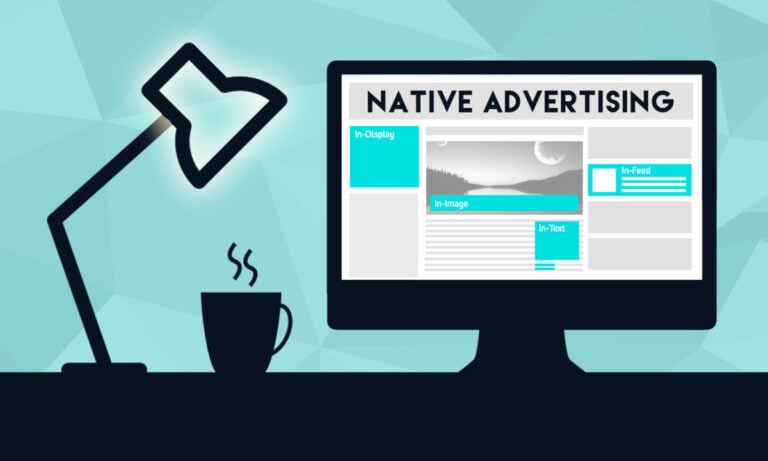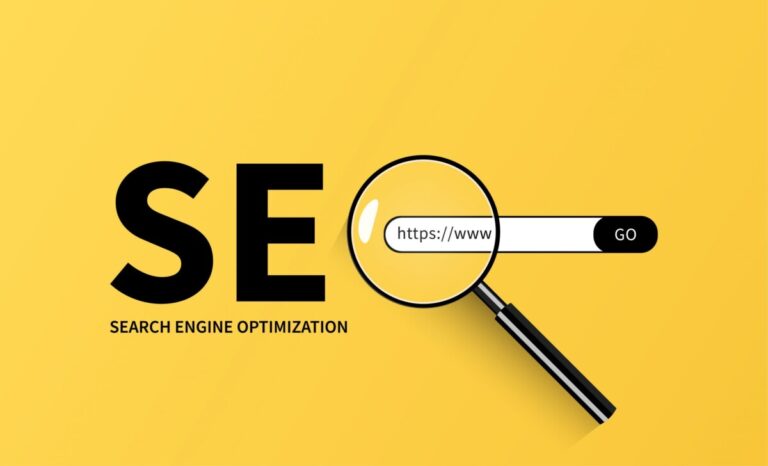The concept of native advertising in today’s digital world is an integral part of the marketing strategy. This approach is an effective tool that allows you to seamlessly embed an advertising message into existing content that is actively consumed and perceived by users.
Most companies not only strive to be present in the advertising space, but also strive to create a seamless experience with their audience. This marketing approach offers a harmonious combination of the advertising message with the overall context into which it is integrated.
However, to fully utilize this strategy, it is important to understand the different formats that native advertising can take. This can range from integration within content blocks to the use of videos, interactive elements or in-app advertising.
What is native advertising?

The essence of native advertising is to create content that does not look like standard advertising, but rather represents part of the general information or entertainment flow with which users are already interacting. This could be an article, video, social media post, or other format that fits naturally into the consumer’s daily behavior.
Integrating advertising into content allows it to become more organic and attractive to the audience. This creates a favorable impression and increases the likelihood that the advertising message will be perceived without negative impact, which in turn contributes to higher effectiveness of the advertising campaign.
Thus, native advertising aims to create a harmonious interaction between advertising content and user experience, which allows you to more effectively convey the advertising message to the audience without causing them irritation or a feeling of intrusiveness.
Variety of native advertising formats
Native advertising formats provide a variety of ways to integrate advertising messages into content so that they flow naturally into the environment and are perceived by the audience as an organic part of the overall context. These formats provide a more organic and effective interaction with consumers, bypassing the direct feeling of advertising.
1. Content articles and materials
This format involves the creation of articles, news or reviews aimed at promoting a product or service, but organically fitting into the context of the publication. The style and tone of these materials is consistent with the overall style and content of the platform on which they are published, making them less prominent in the content.
2. Advertising units in social media
This format represents publications on social networks that are visually and content-wise similar to regular posts, but carry a commercial message. Their naturalness and implicit nature of advertising contribute to effective interaction with the audience.
3. Video advertising
This format includes ad inserts within videos where product or service information is integrated into the main content, maintaining integrity and without disrupting the flow of viewing. It is especially effective due to its ability to convey information through visual and sound effects.
4. Advertising in search results
This format presents advertisements that look and behave like regular search results, but are labeled as advertisements. They allow you to promote products or services in search engines, combined with natural search results.
5. Subscription mailings
This format represents advertising messages sent by e-mail in the form of newsletters. They contain commercial content but are similar in appearance to regular newsletters, making them less intrusive to recipients.
Native advertising examples
Sponsored content on social networks
Influencers often make sponsored posts on social media where they naturally integrate products or services into the content of their accounts. These posts do not stand out as advertisements and remain natural to followers.

Advertising articles in online magazines
Publishing advertising articles in online magazines allows you to include commercial messages in the overall content of the publication, while maintaining the style and tone of the magazine. This contributes to a more organic perception of advertising.
Advertising in search results (Google Ads)
Search results ads, such as Google Ads, are labeled as advertisements but visually match organic results. This helps advertisers reach the target audience while they are looking for specific products or services.
Advertising in the news feed of social networks
This format provides the ability to display advertising posts in the news feed of social networks, integrating them with regular posts from friends and other publications. This keeps the user experience natural.
Sponsored newsletters
Companies use sponsored email campaigns that look like newsletters. They contain useful information combined with a sales pitch, allowing for a more seamless interaction with recipients.
Benefits of native advertising
Native advertising has a number of advantages that make it effective and attractive to the audience due to its natural integration into surrounding content:
- increased engagement: native advertising, implicitly presented in the content, is more organically perceived by users. The difference from typical advertising allows it to be better assimilated, and users respond to such ads more often, which increases the level of engagement;
- increased conversions: The naturalness and organic nature of native advertising typically results in higher conversion rates. Such ads attract users interested in the content, which increases the likelihood of them converting into customers or active consumers of the product or service;
- Reduce Banner Blindness: Traditional banner ads may face the phenomenon of “banner blindness,” where users ignore or fail to notice such forms of advertising. Native advertising overcomes this phenomenon by being naturally integrated into the content, making it less annoying and more likely to be understood.

Limitations and risks of native advertising
Despite its effectiveness and organic nature, native advertising has its limitations and risks that are important to consider:
- advertising identification: One important aspect is to clearly identify native advertising as such. Advertisers and publishers are responsible for providing clear information to the user that the content is an advertisement, preventing confusion and maintaining transparency;
- contextual: Despite the integration into the content, native advertising must fit organically into the context of the publication. Lack of connection to content can lead to misunderstandings and negative perceptions from users;
- transparency: Advertisers are required to provide transparent information that the content is an advertisement. This includes presenting information about the product or service fairly and clearly indicating the promotional nature of the content.
These limitations and risks highlight the importance of being transparent and contextual in order to successfully integrate native advertising into surrounding content without compromising trust and audience perception.
Examples of successful native advertising campaigns
BuzzFeed and Tasty
BuzzFeed has successfully integrated native advertising on its “Tasty” food and recipe page. Advertisers create content that matches audience interests and provides information about products or ingredients related to cooking.
New York Times Sponsored Articles
The New York Times offers sponsored articles for brands that want to integrate their messages into the publication’s content. This provides an opportunity for brands to present informative content that meets the publication’s high editorial standards.
Netflix and the series “Stranger Things”
Netflix used native advertising in the form of interactive promotional videos for the series Stranger Things. Using creative elements, they attracted the attention of users by offering interactive features in advertising.
Sponsorship of The Oscars
Brands use native advertising to sponsor events such as award shows. This makes it possible to integrate the brand into the event content and attract the attention of the audience, corresponding to the theme of the event.
These successful examples of native advertising show how various brands and publications have effectively used the format to create advertising messages that integrate seamlessly into the content and match the interests and expectations of their consumers.
Conclusions
Native advertising is an effective marketing tool with a number of benefits, including increased audience engagement and increased conversions. However, along with the benefits, it carries certain risks.
Lack of clear ad identification and lack of transparency can undermine user trust in brands and content publishers. Underestimating contextual relevance can also negatively impact perception and lead to audience disappointment.














